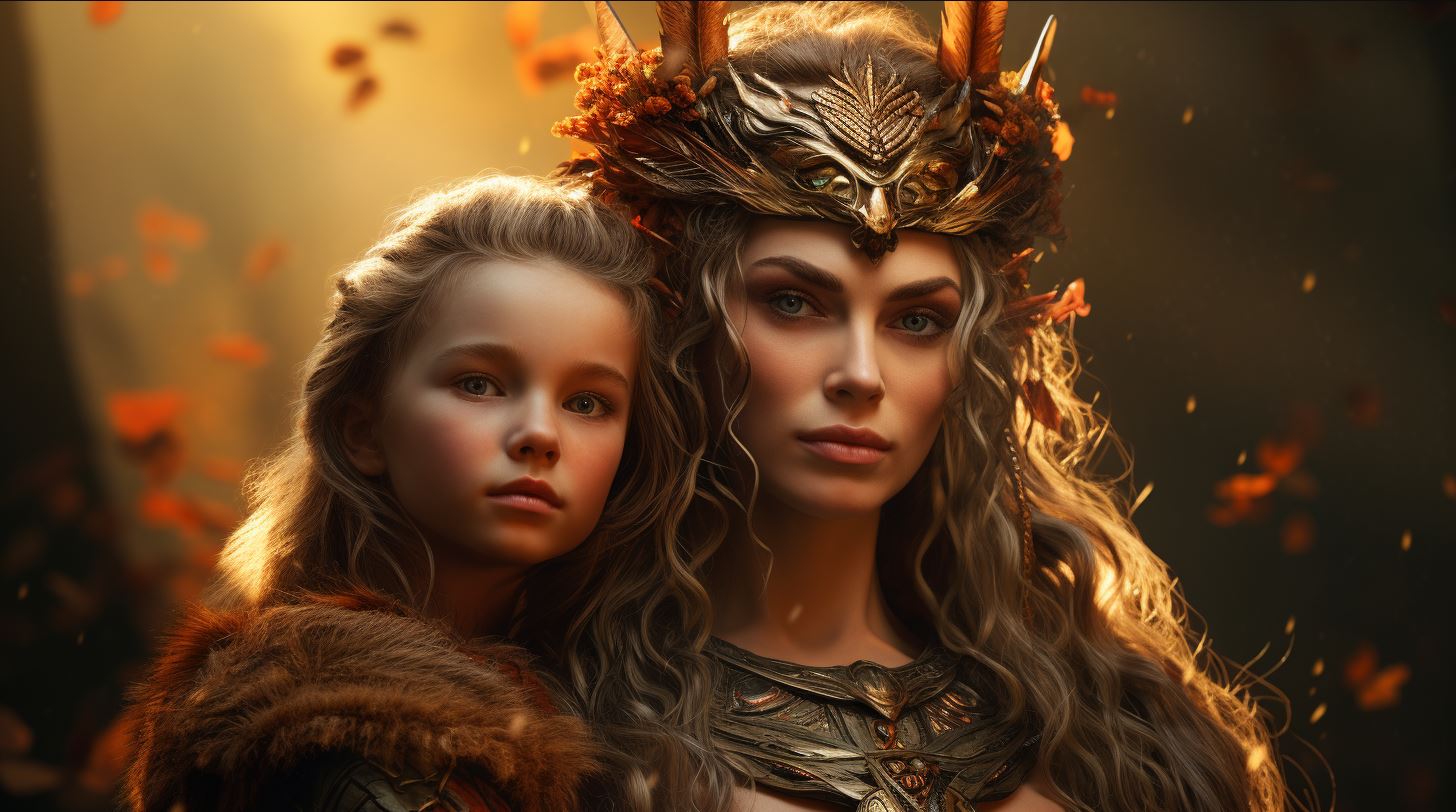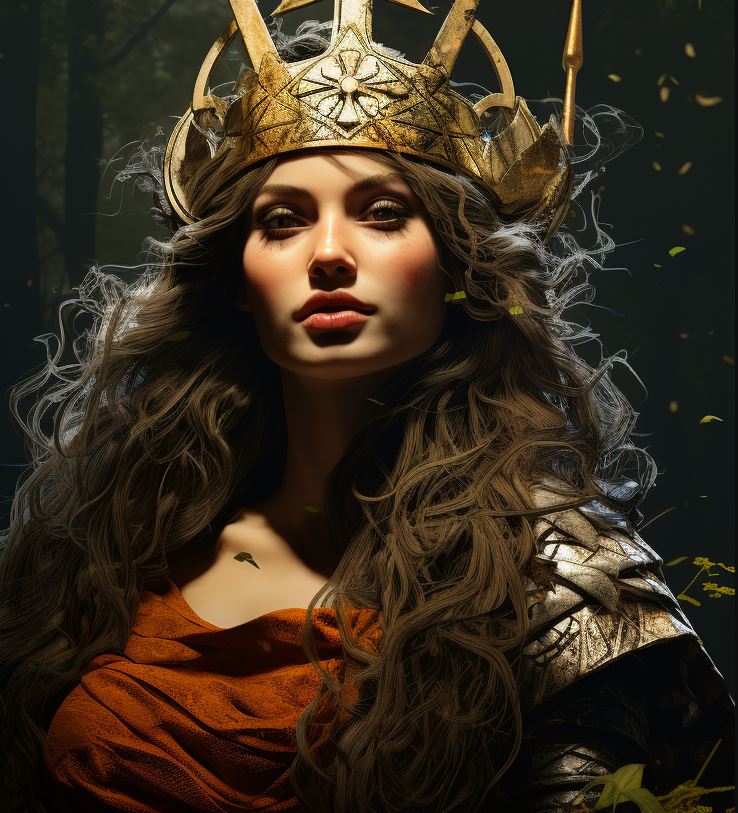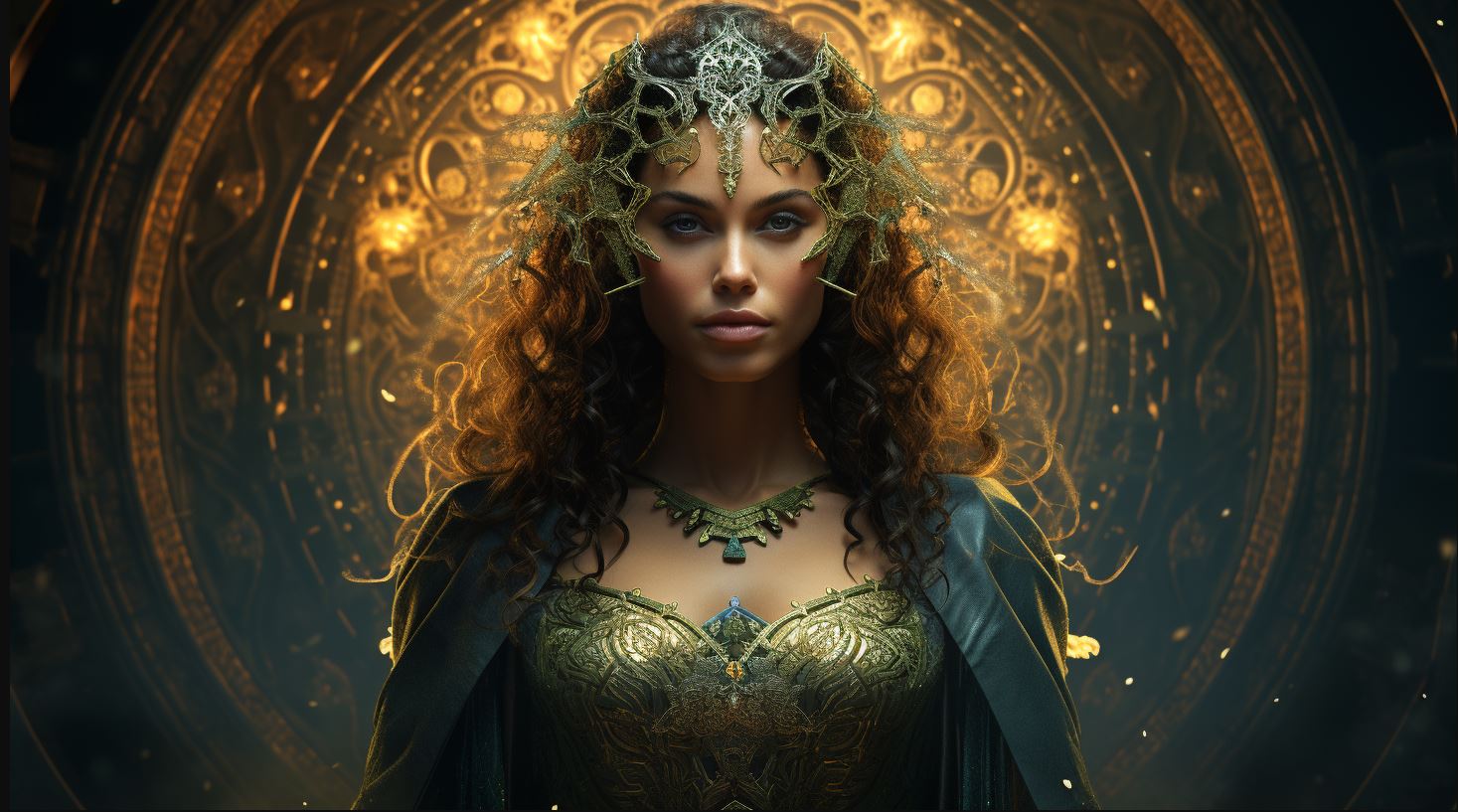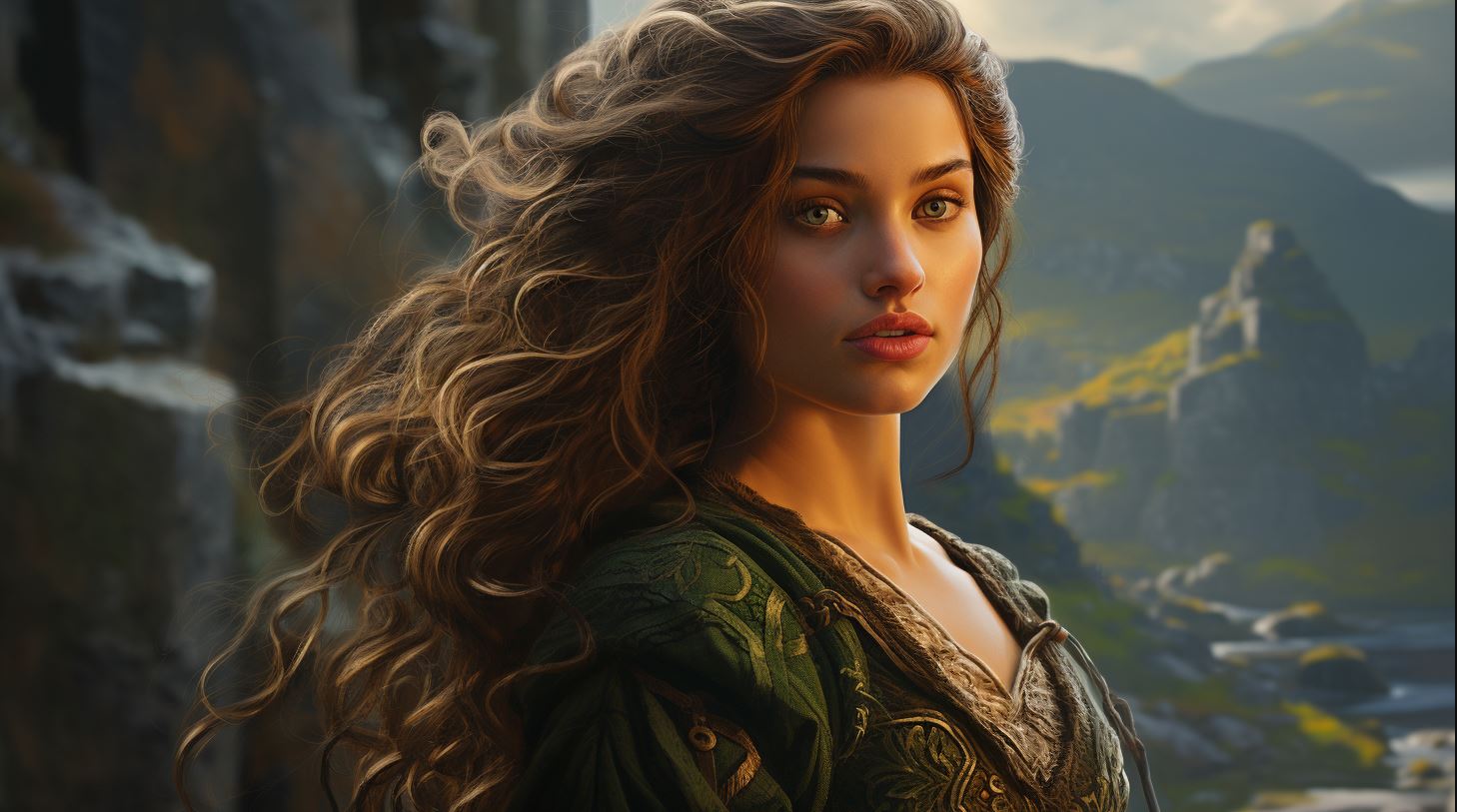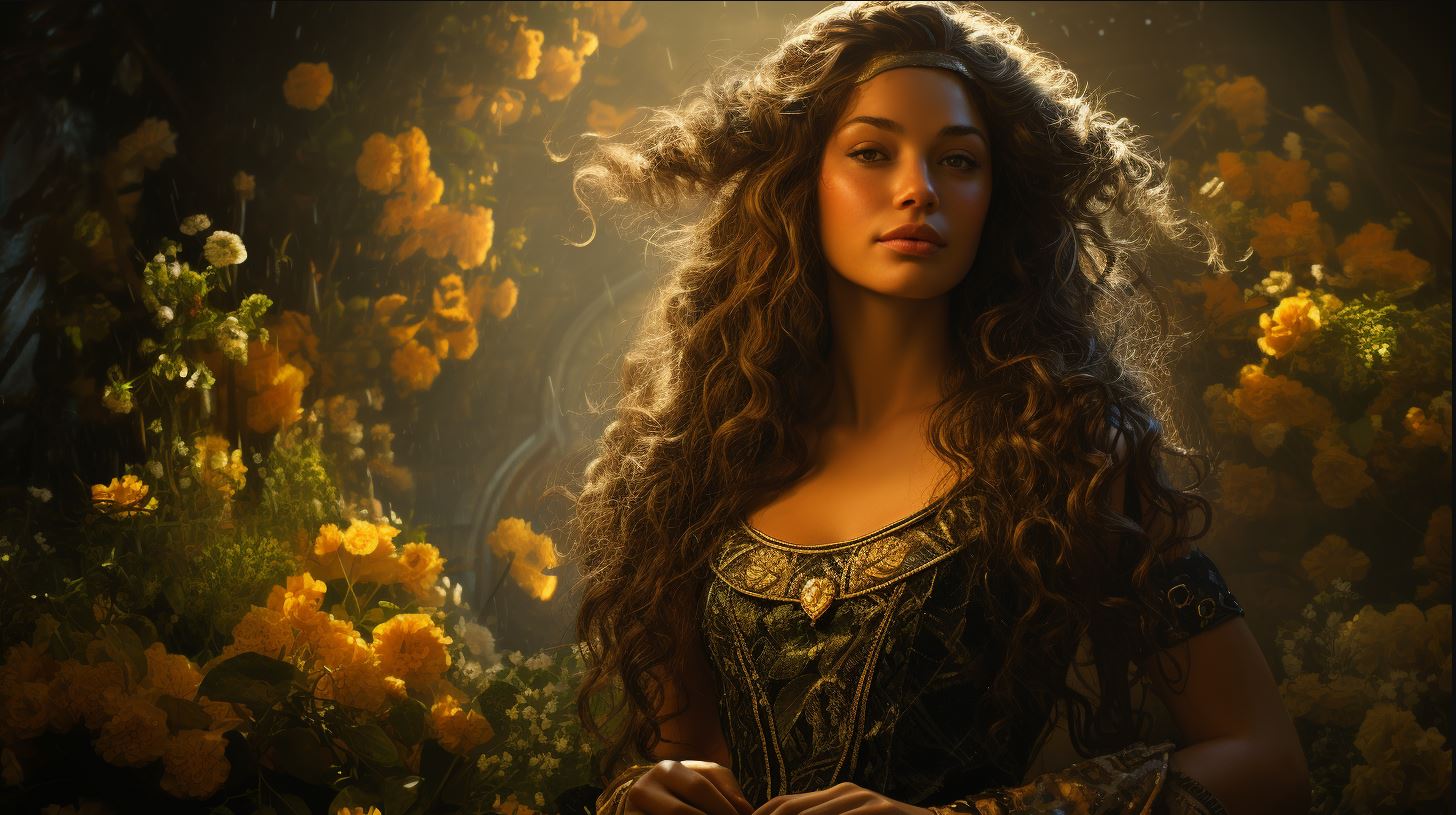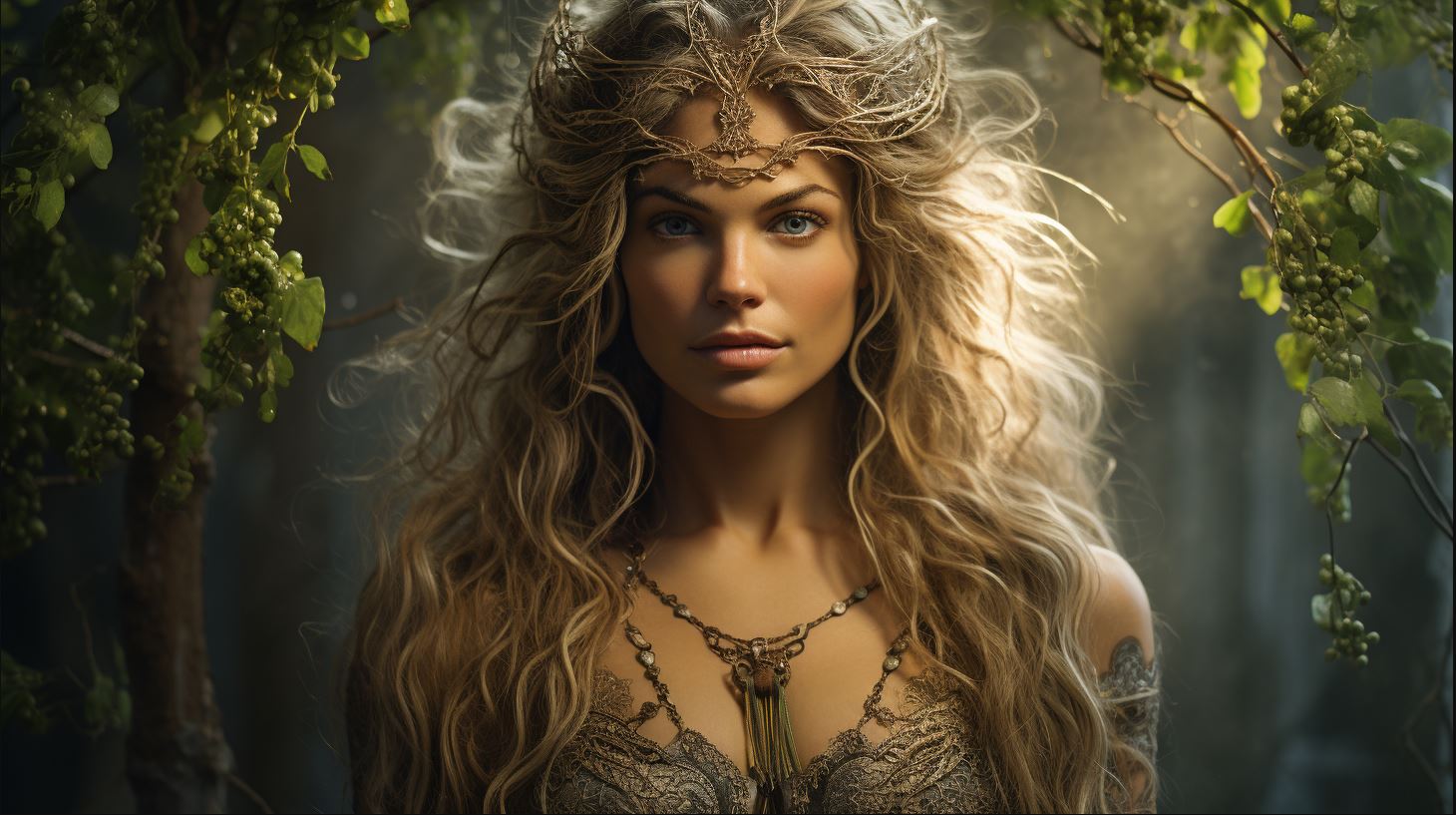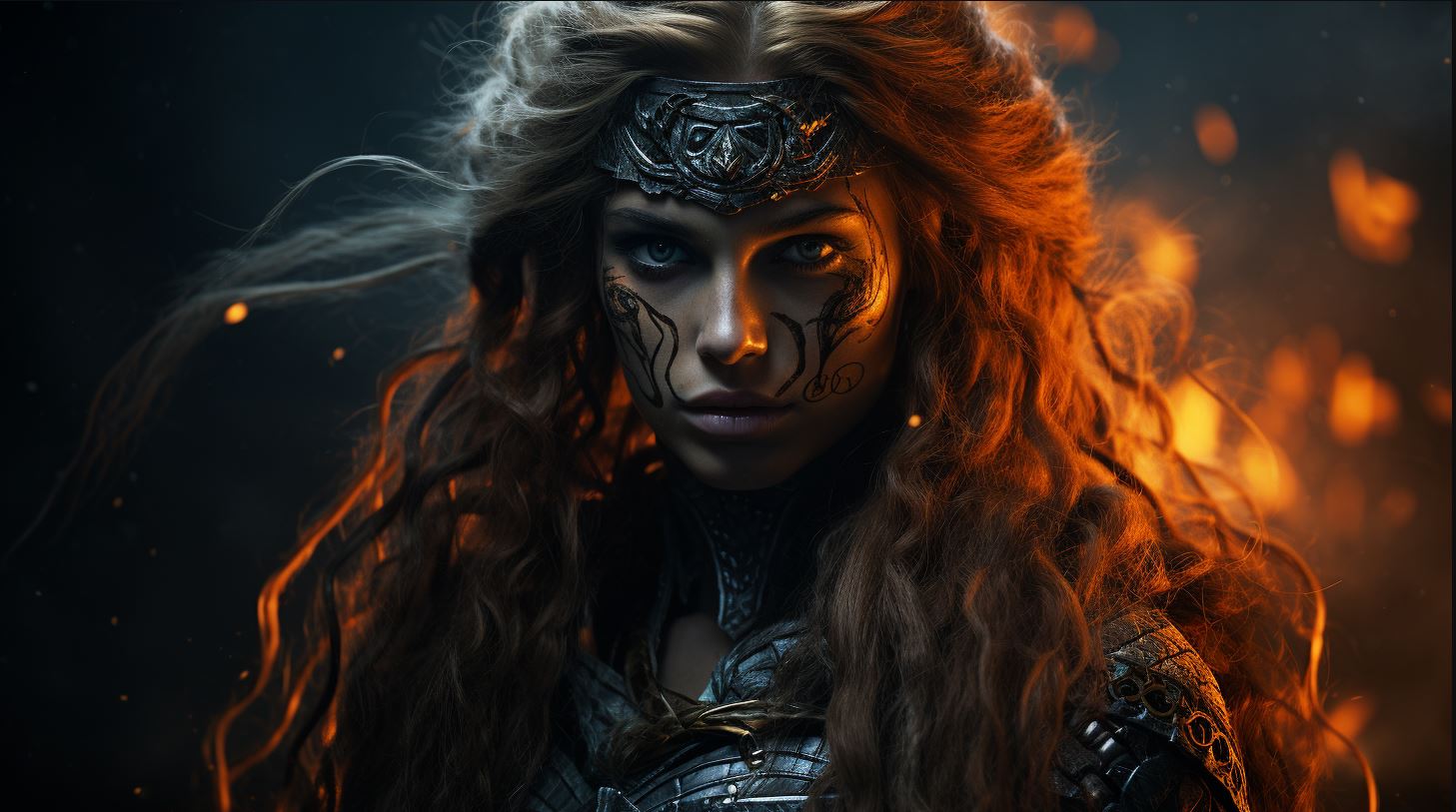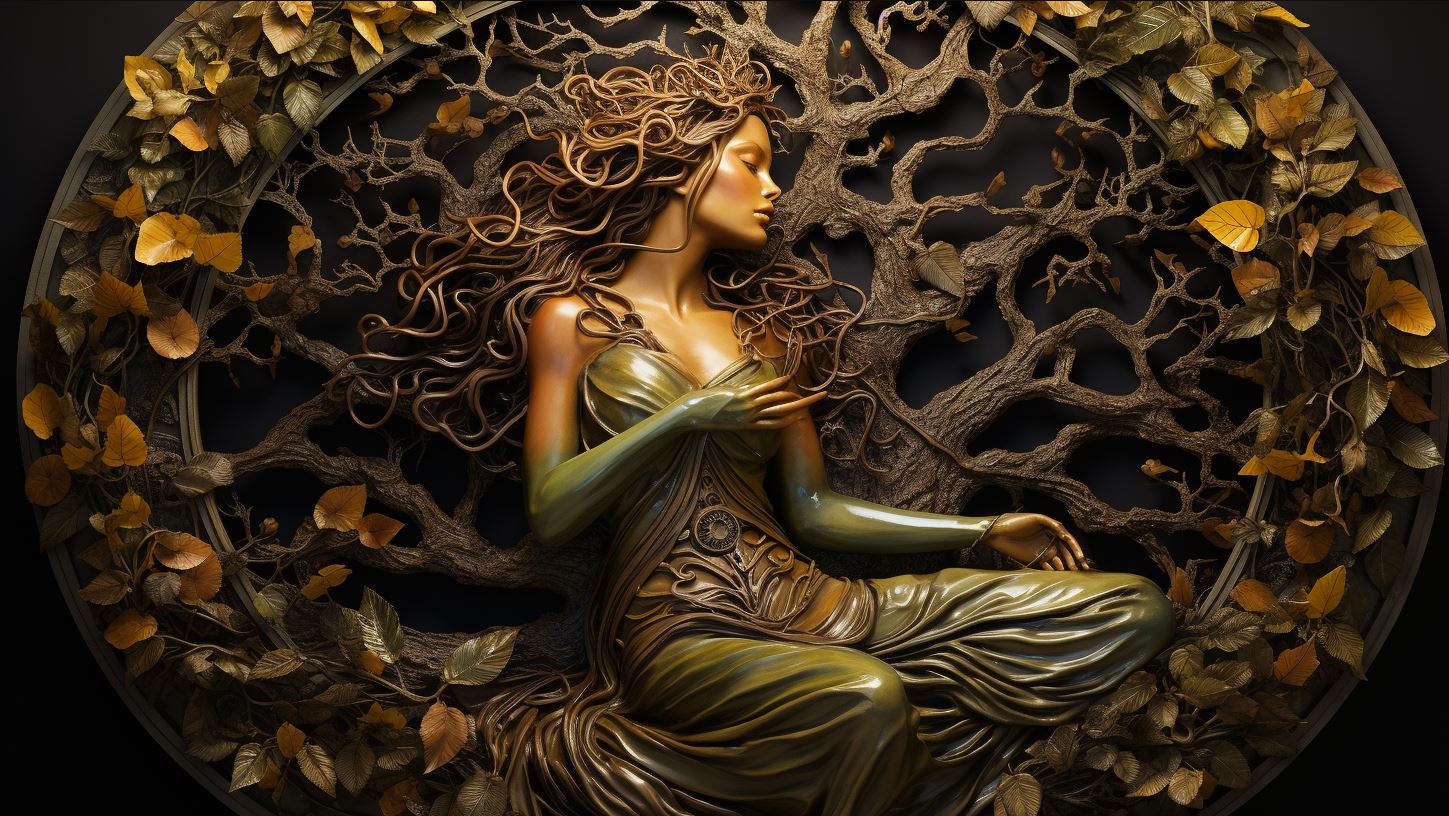Cethlenn Celtic Goddess: Unveiling the Powerful Mythology and Legends

Cethlenn Celtic Goddess holds a prominent place in Irish mythology as the wife of Balor and mother of Ethniu, playing a significant role in the battles of Mag Tuired.
Her prophecy and actions during the conflicts, including her striking injury to the Dagda, have made her a notable figure. Additionally, her nickname ‘Cethlenn of the Crooked Teeth’ adds to her intrigue.
The alleged connection of her death to Enniskillen, although refuted by historical sources, highlights her lasting impact on Irish folklore. This article provides an analysis of Cethlenn’s role in Celtic mythology, delving into her legends and possible historical aspects.
The Mythological Background of Cethlenn
As we delve into the fascinating world of Celtic mythology, we encounter the enigmatic figure of Cethlenn. Her story is intertwined with the epic battles of Mag Tuired. Let’s explore the origins and significance of Cethlenn in this mythological landscape.
The First Battle of Mag Tuired
Before diving into Cethlenn’s role, we must first understand the context of the First Battle of Mag Tuired. This legendary clash took place between the Tuatha Dé Danann, a mythical race of gods and goddesses, and the Fomorians, a malevolent divine race.
The conflict arose over the control of Ireland, with both sides vying for supremacy.
During this battle, the Fomorians were led by their formidable king, Balor. It is in this tumultuous time that Cethlenn emerges as a key figure in Celtic folklore.
Cethlenn: Wife of Balor and Mother of Ethniu
In the intricate tapestry of Irish mythology, Cethlenn is known as the wife of Balor, the fearsome king of the Fomorians, and the mother of Ethniu. Her familial ties place her at the heart of the ancient conflict.
The role of Cethlenn goes beyond mere lineage, as she possesses unique qualities and abilities. Like many renowned figures of Celtic mythology, she is not limited to a singular role but exhibits a multidimensional persona.
Although Cethlenn is primarily known for her connection to Balor, her character extends beyond her familial ties, making her a distinct figure in the mythology surrounding Mag Tuired.
Now that we have explored the mythological background, let us venture further into the intriguing aspects of Cethlenn’s prophecy, her involvement in the Second Battle of Mag Tuired, and her remarkable feats as a brave warrior in subsequent sections.
Cethlenn’s Prophecy and Role in the Second Battle of Mag Tuired
As the second battle of Mag Tuired loomed, Cethlenn’s unique abilities as a prophetess came to the forefront. It is said that she possessed the gift of foresight and used it to warn her husband, Balor, of the impending defeat at the hands of the Tuatha Dé Danann.
In this crucial phase of the conflict, Cethlenn’s role went beyond being a mere observer. Her boldness and strength propelled her into action, where she actively participated in the battle alongside Balor and their Fomorian allies.
While her primary aim was to protect her family and the Fomorian forces, she also contributed her skills as a warrior.
As the battle raged on, Cethlenn’s presence on the battlefield was felt.
With her weapon in hand, she fearlessly engaged in combat, defending her loved ones and striving to secure victory for the Fomorians. Her strategic insights as a prophetess proved invaluable, as she guided Balor and the Fomorians based on her foreknowledge of the outcomes.
It is worth noting that Cethlenn’s actions during this epic clash had a significant impact on the outcome. While the exact details of her feats have been somewhat obscured by time, her legendary reputation as a fierce and formidable warrior endures.
Cethlenn’s dual role as prophetess and warrior adds depth to her character. It emphasizes her multifaceted nature and highlights the integral role she played in the Second Battle of Mag Tuired.
Cethlenn: The Brave Warrior and Wounding the Dagda
Cethlenn, the Celtic Goddess of Irish mythology, not only held the role of a wife and mother but also distinguished herself as a fearless warrior. Her valor was prominently displayed during the battles of Mag Tuired, where she played a significant part.
One of Cethlenn’s notable acts was inflicting a wound upon the Dagda, a prominent figure among the Tuatha Dé Danann. This act of bravery showcases her skill as a warrior and her determination to play a crucial role in the outcome of the battle.
The precise weapon used by Cethlenn to wound the Dagda is not explicitly mentioned in the available texts. However, it is believed to have been a formidable projectile weapon, demonstrating her proficiency in combat and her commitment to the cause she was fighting for.
Cethlenn’s ability to wound such a prominent figure as the Dagda is a testament to her strength and fearlessness on the battlefield. Her actions served as a significant turning point in the battle, instilling a sense of vulnerability in the ranks of the Tuatha Dé Danann.
As a brave warrior, Cethlenn’s role extended beyond her ability to wound the Dagda. Her presence alone on the battlefield would have undoubtedly struck fear into the hearts of her enemies, for she was known to be a formidable and determined adversary.
Through her courageous acts and her skillful participation in the battles of Mag Tuired, Cethlenn solidified her place in Celtic mythology as an indomitable warrior and a pivotal figure in the struggles of her time.
Her legacy as an exceptional fighter continues to be celebrated in tales and legends, showcasing the enduring strength and bravery of the Celtic Goddess.
The Crooked Teeth: Cethlenn’s Nickname and Significance
Cethlenn, the formidable Celtic Goddess, has another intriguing aspect that adds to her mystique: her nickname, ‘Cethlenn of the Crooked Teeth’.
This epithet highlights a distinct and memorable physical characteristic associated with Cethlenn. While the origin and deeper symbolism behind her crooked teeth remain uncertain, it is a title that has endured through time.
Often in mythology, distinct physical traits are used to depict a character’s unique attributes or powers, and Cethlenn’s crooked teeth serve as a distinguishing aspect.
The significance of Cethlenn’s crooked teeth is open to interpretation.
It may represent her ferocity and strength as a warrior or symbolize her connection to the divine realm. Just as a raven’s beak signifies its predatory nature or the lion’s fangs depict its power, Cethlenn’s crooked teeth could signify an inherent quality that adds to her prowess in battle or her prophetic abilities.
Legends and myths often use physical attributes as symbolic markers to impart a deeper understanding of a character’s nature or role. In the case of Cethlenn, her crooked teeth evoke a sense of mystery and intrigue, hinting at hidden depths and untapped powers.
The significance of her nickname serves as a reminder of her extraordinary presence in Celtic mythology, leaving a lasting impression on those who hear of her tale.
In the next section, we will explore the alleged location of Cethlenn’s death and unravel the connections to Enniskillen, delving into the historical context and potential ties to her remarkable legacy.
Enniskillen: The Alleged Location of Cethlenn’s Death
Enniskillen, a town located in County Fermanagh, Northern Ireland, has been surrounded by folklore regarding its connection to the mythical figure Cethlenn. According to local legends, it is believed that Cethlenn met her tragic end in the vicinity of Enniskillen.
However, let’s examine the validity of these claims and explore the historical context behind Enniskillen’s association with Cethlenn’s demise.
Debunking the Enniskillen Swimming Legend
One popular folk tale suggests that Cethlenn, after sustaining injuries during the battle, miraculously swam across the waters and found her final resting place in Enniskillen. However, it is important to note that this swimming legend lacks substantial historical evidence and seems to have emerged as a later embellishment.
The History of Enniskillen and its Connection to Cethlenn
Enniskillen, originally named after a fortress on an island in the River Erne, was historically associated with the Maguire clan of Fermanagh. While there are no direct references linking Cethlenn to Enniskillen, the town’s rich heritage and its role as a stronghold during ancient times might have contributed to the folklore surrounding Cethlenn’s supposed connection.
Moreover, Enniskillen’s strategic location made it an important center of power in the region, attracting various mythical associations over time. It is within this historical context that the legends of Cethlenn meeting her fate in Enniskillen might have originated, intertwining myth and history.
Despite the lack of concrete evidence, Enniskillen serves as a reminder of Cethlenn’s enduring legacy in Celtic mythology. The town, with its captivating landscapes and historical significance, continues to inspire speculation and intrigue surrounding the goddess’ alleged presence.
Analysis and Interpretation of Cethlenn’s Role in Irish Mythology
Cethlenn’s presence in Irish mythology holds significant intrigue, as she embodies various aspects that make her a complex and compelling character. Through careful analysis, we can gain valuable insights into her role and significance within the mythological context.
One notable aspect of Cethlenn’s character is her connection to the two battles of Mag Tuired. In the first battle, she does not directly participate, but her presence alongside Balor lays the foundation for her subsequent involvement.
As the wife of Balor and mother of Ethniu, her familial ties link her to both the Fomorian and Tuatha Dé Danann factions, setting the stage for significant conflict.
In the second battle, Cethlenn’s prophetic abilities come to the fore.
As a skilled seer, she forewarns Balor of the impending defeat by the Tuatha Dé Danann. This demonstrates her strategic importance and her role as a mediator between the divine forces at play.
Furthermore, Cethlenn’s brave warrior nature is showcased through her involvement in the actual battle. With her formidable skills, she not only contributes to the clash but also engages in combat by injuring the powerful Dagda. Her actions reveal her prowess as a valiant fighter, defying gender norms prevalent in ancient Celtic society.
The epithet ‘Cethlenn of the Crooked Teeth’ adds an intriguing layer of symbolism to her character. The symbolism of crooked teeth can imply a sense of fierceness, unpredictability, or even primal qualities, further enhancing Cethlenn’s enigmatic nature.
It emphasizes her untamed spirit and willingness to engage in battle, generating a sense of awe and fear among her adversaries.
Regarding the alleged connection between Cethlenn and Enniskillen, further analysis suggests that the swimming legend, which tells of her final moments, lacks concrete historical evidence.
While there is no denying the significance of Enniskillen as a place rich in Celtic history, there is no direct proof of Cethlenn’s swim to the area or her ultimate demise there.
Therefore, it is crucial to approach this aspect with caution and recognize it as a potential embellishment.
In conclusion, the analysis and interpretation of Cethlenn’s role in Irish mythology shed light on her multifaceted character, blending elements of prophecy, warrior valor, and mysterious symbolism.
Her contributions to the battles of Mag Tuired, her prophetic abilities, and her epithet all contribute to her enduring legacy in Celtic folklore. While some aspects remain open to interpretation, Cethlenn’s significance as a powerful and enigmatic figure cannot be understated.
.

